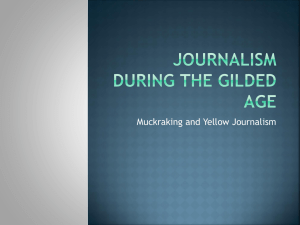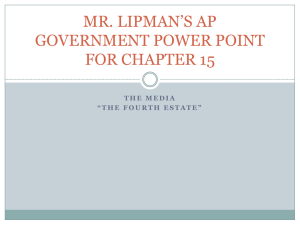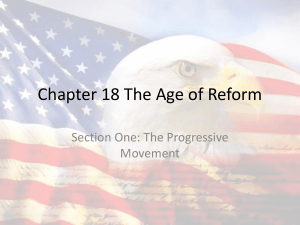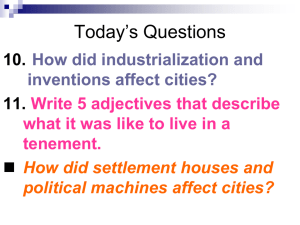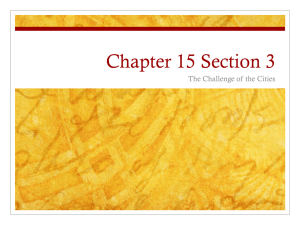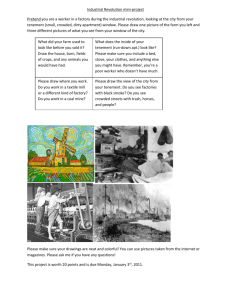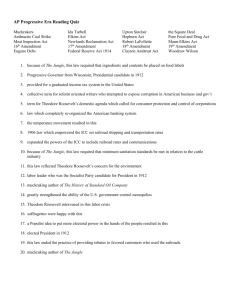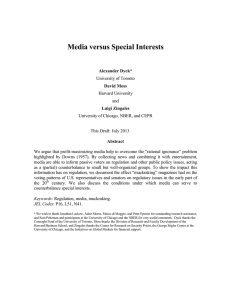PE Urban Problems and Public Health
advertisement
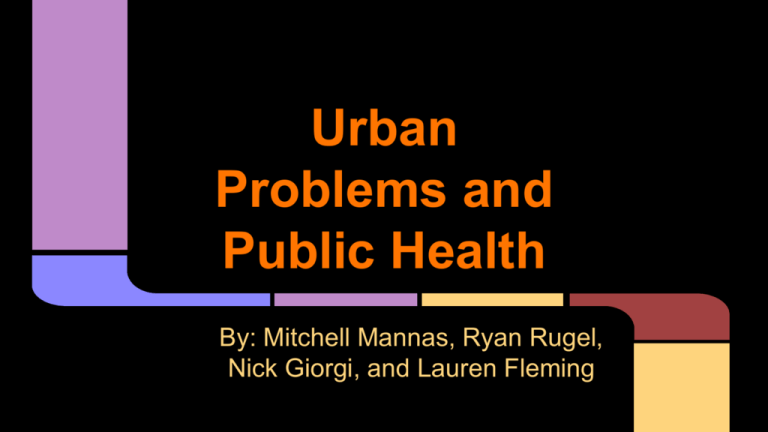
Urban Problems and Public Health By: Mitchell Mannas, Ryan Rugel, Nick Giorgi, and Lauren Fleming Background/Problems ● Low income families resided to overcrowded tenement houses ○ Generally 4-5 families per floor of the house ○ Ideal conditions for diseases ● Waste was a major problem ○ People threw their trash into the streets ○ Personal waste disposal ● Local politics in shambles ○ Corruption ■ Rockefeller’s ruthless business tactics ■ Medicine fraud ○ Inefficiencies ■ Meat packing plants were unsanitary Goals ● Main goal was to challenge political machines about poor urban conditions ○ Address the need for necessities such as a clean, plentiful water supply ○ Disease was prevalent ● Ultimately wanted a change in policies of local politics rather than eradicate the entire political system ○ Expand the power of appointed administrators ○ Revise city charters to strengthen mayoral power ○ Wanted to make urban reform a non partisan and non political issue Exposure and Muckraking ● ● Photojournalist Jacob Riis’s book How the Other Half Lives became a bestseller o Eye-opener to the public about the overcrowded and desolate conditions in impoverished neighborhoods o Advocated for stricter building codes Robert Hunter’s book Poverty continued the ideas of How the Other Half Lives o Based his observations on the slums of Chicago and New York o Sought to describe not only the problems, but to explain how such problems would continue to grow unless the public could adequately address the issue o Made the bold claim that 10 million Americans were still "underfed, underclothed, and poorly housed"—some 13% of the U.S. population Notable Names Good Guys ● ● Business and professional elite who worked to create city commissions and city managers o Frederic C. Howe-City Beautiful movement Women’s benevolent societies and middle class evangelical Protestants who worked for reform o Those who worked in settlement houses such as Florence Kelley and Jane Addams Bad guys ● ● ● Party machines who failed to provide adequate city services o William Tweed and Tammany Hall Corporations who robbed their workers of decent enough wages to survive o John D. Rockefeller, Jay Gould Politicians who defended business and saw exposure journalism as “muckraking” and impeding economic success o Theodore Roosevelt Strategies and Tactics ● Muckraking Journalism ● Strikes and Rallies ● Restructure city government o Appoint board of commissioners ● Initiative o Subject for legislation ● Referendum o Submission of a law to a direct popular for for approval or rejection ● Recall o Remove official by popular vote Groups Involved (Level of Involvement) ● Urban Reformers ● Muckraking Journalists o Exposing economic, social, and political evils o Drew attention of millions in Urban poverty, political corruption, plight of industrial workers, and immoral business practices ● Businesses and professional elites o Biggest boosters of structural reforms in urban gov. o Pushed for board of commissioners to replace mayor-council ● Progressive Politicians o Focused on human problems in industrial city ● Women’s benevolent societies Obstacles Faced ● ● ● ● ● ● Dirty streets full of trash and sewage Unsanitary conditions in food processing plants Dangerous factory conditions Corrupt City and State Governments Contaminated food Lack of medical assistance to help fight infectious diseases Successes & Failures Successes ● Improved sewer lines and cleaned up the streets ● Added Parks ● Restrictions in the amount of hours a person could work ● Ban on child labor ● Tenement house act of 1901 ● Meat act of 1906 Failures ● Sanitation and Health problems were not able to be completely solved until 1930’s, due to lack of federal funding
